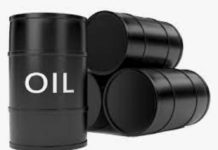There are many types of oils and fats on the market with different chemical properties and health benefits.
For most people, the choice of oil is based on price and flavour. For good health, it may not be obvious which oils and fats to choose for cooking and preparing our food. This handout provides you with advice on choosing the best oils and fats for different methods of cooking and preparing food.
It is important to remember that whichever you choose, all oils are roughly 99% fat and for good health, it is recommended we limit our intake of fats.
Pan frying or Stir-frying: Use a small amount of oil or fat to completely lubricate the pan. It is important to select a fat or oil which will not smoke at the high temperatures. Another important consideration in pan frying is viscosity Examples of suitable oils are refined olive oil and all oils that are suitable for deep frying.
Baking: Unsaturated fat spreads with a lower fat content (less than 59% fat) can be used for baking as an alternative to butter or ordinary baking fat which is high in saturated fat. Read the label to check the fat content and make sure the spread you use is suitable for baking. Alternatively, small amounts of oils with a high smoke point and mild taste are good choices such as sunflower, corn and rapeseed oils. You may need to alter the recipe so remember to find baking recipes that are designed to use oils
Dressings and dips: Make dressings and dips with small amounts of oils that have plenty of flavours and high in healthy unsaturated fats. Good choices include extra virgin olive oil, seed and nut oils such peanut and sesame seed oils.
Compiled by the team at foodinfocus.org





![How ‘thieves’ have been tapping Nigeria’s oil at sea for 9 years [Video] How an illegal oil pipeline connecting directly to the high sea was recently discovered in Nigeria](https://www.adomonline.com/wp-content/uploads/2022/10/image_2022-10-10_112348789-218x150.png)